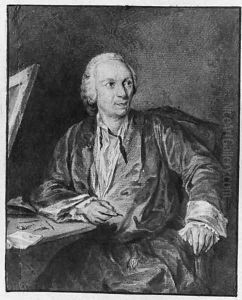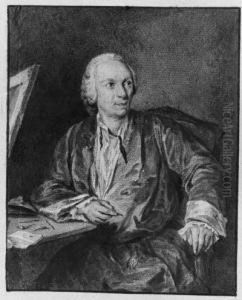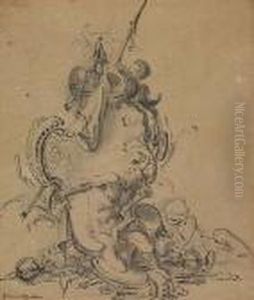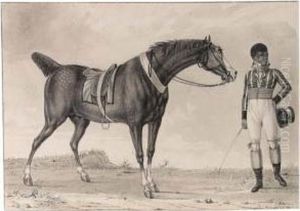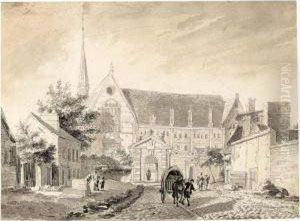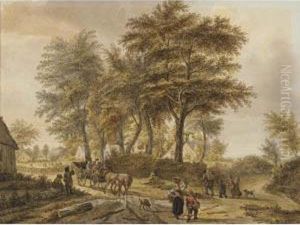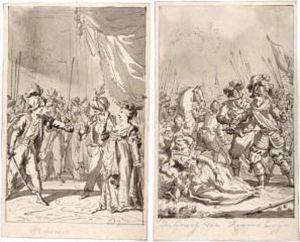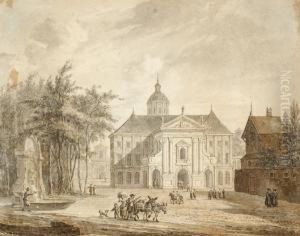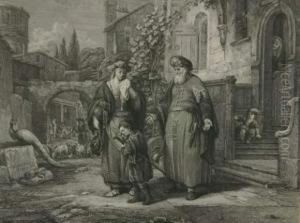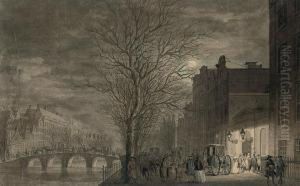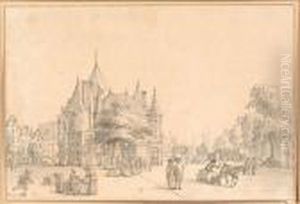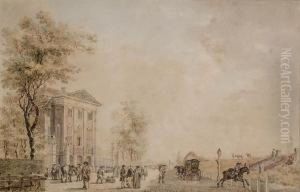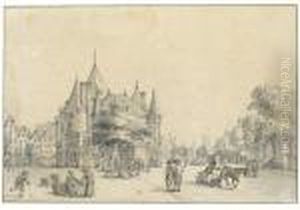Reinier Vinkeles Paintings
Reinier Vinkeles was a Dutch artist, primarily known for his work as an engraver. Born on September 12, 1741, in Amsterdam, he rose to prominence in the late 18th and early 19th centuries. Vinkeles initially trained under Jan Punt, a well-regarded engraver of the time, and his early work was heavily influenced by his mentor. He developed a style that was detailed and expressive, quickly establishing himself in the Dutch art scene.
Vinkeles' work is characterized by its fine detail and precision, qualities that made him one of the leading engravers in the Netherlands during his lifetime. He was not limited to one subject matter; his portfolio includes a wide range of themes, from historical events and figures to scenes of everyday life. His engravings were not only appreciated for their artistic quality but also for their historical value, as they captured and preserved the essence of late 18th-century Dutch society and culture.
Aside from his individual contributions, Vinkeles played a significant role in the Amsterdam art community. He was a member of the Amsterdam Drawing Society, a testament to his skills and his commitment to the development of the arts in the Netherlands. This society was a gathering of artists and art enthusiasts who aimed to promote the arts and provide a platform for artists to share their work and ideas.
Despite his success, there is not a vast amount of detailed personal information available about Reinier Vinkeles. It is known, however, that his work left a lasting legacy. After his death on February 30, 1816, his engravings continued to be celebrated for their contribution to Dutch art and history. Today, his works are held in high esteem, both in the Netherlands and internationally, and can be found in museums, galleries, and private collections around the world.
Vinkeles' engravings serve as a window into the past, offering insights into the cultural, social, and political life of his time. His dedication to his craft and his ability to capture the essence of his subjects have ensured that his work continues to be studied and admired by art historians, collectors, and enthusiasts alike.
